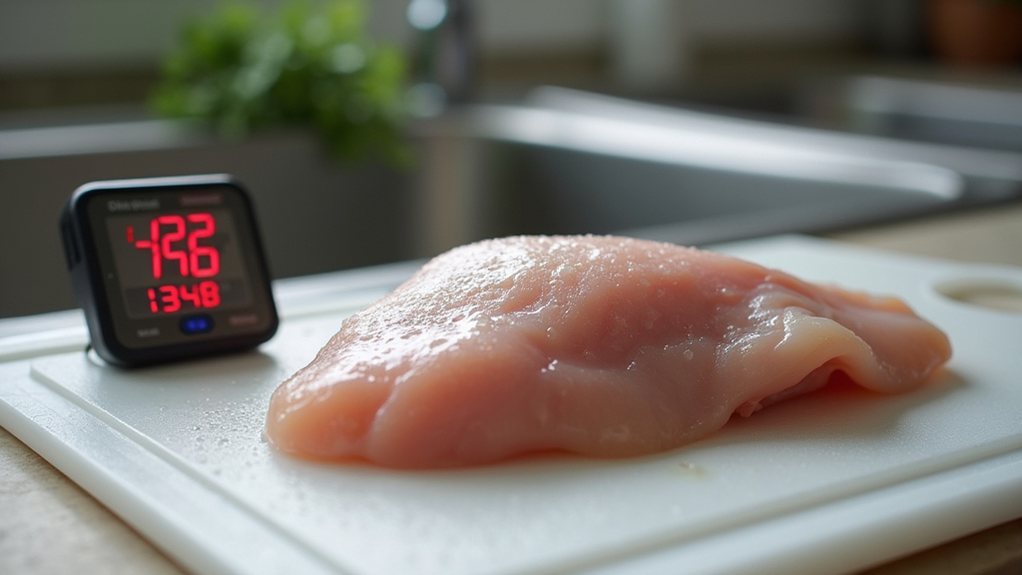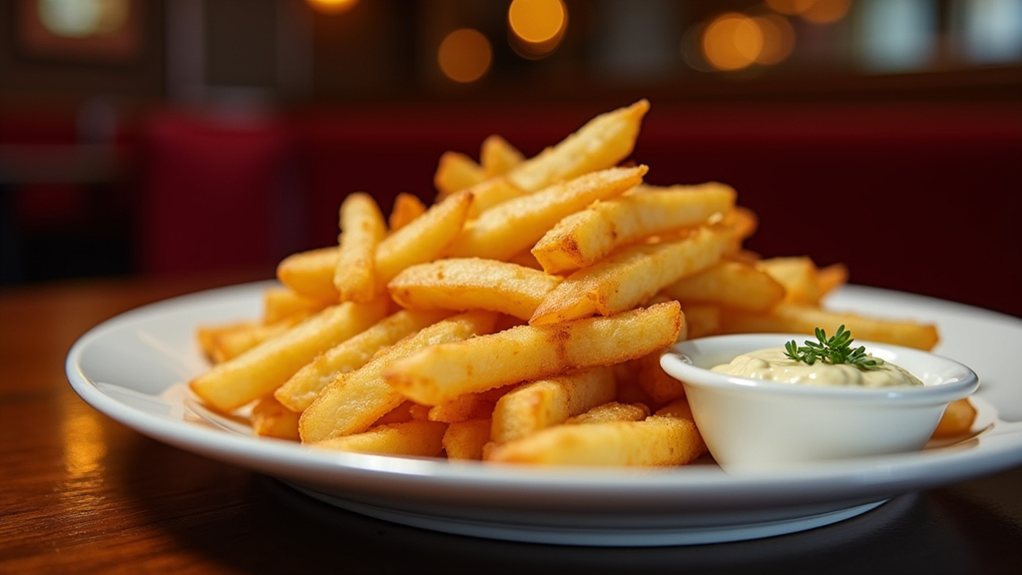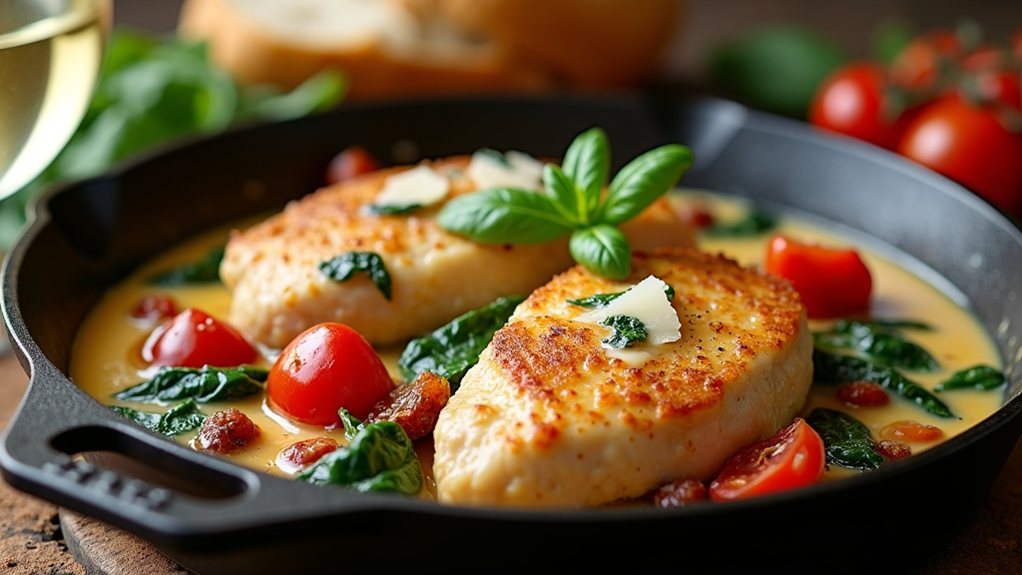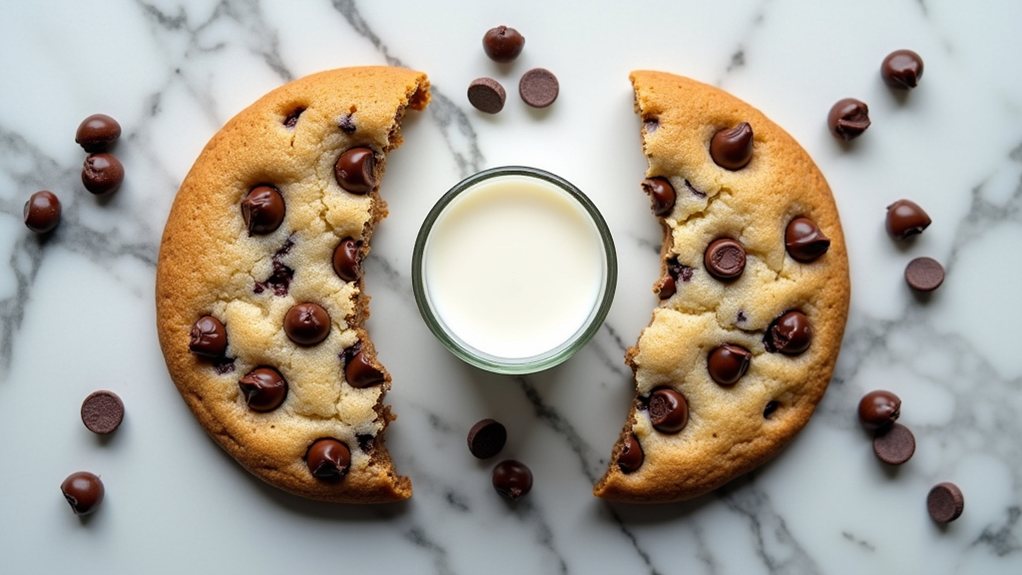Chicken thawing seems simple enough, yet millions of home cooks unknowingly create breeding grounds for dangerous bacteria every day. The temperature danger zone between 40°F and 140°F transforms ordinary poultry into a potential health hazard, with bacteria multiplying rapidly on countertops across America. While grandma’s method of leaving chicken out all day might feel traditional, modern food safety science tells a different story. Three safer alternatives exist, each balancing convenience with protection against foodborne illness that affects thousands annually.
Safe Chicken Thawing Practices
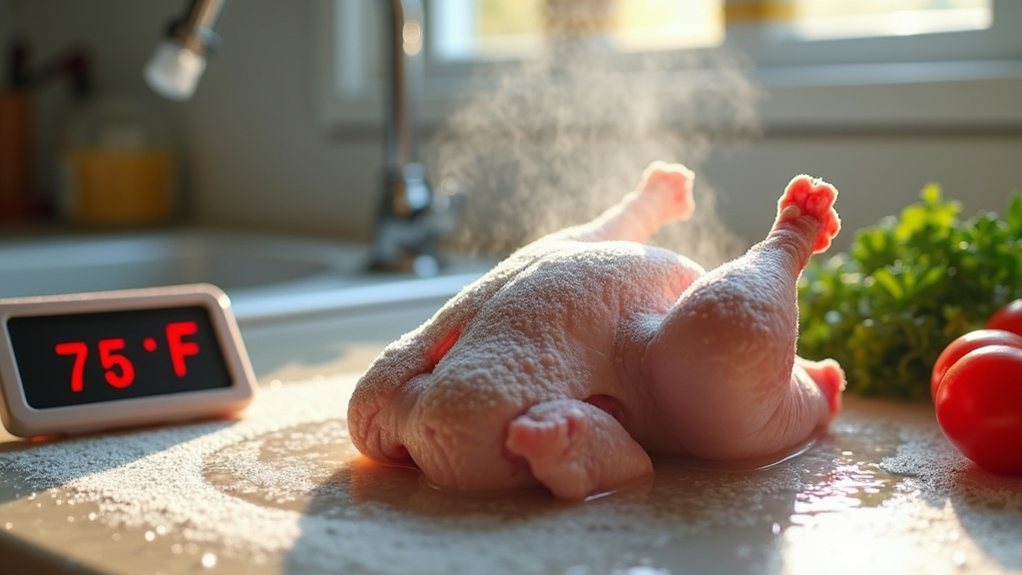
Nearly everyone has made at least one significant error while defrosting chicken, unknowingly putting themselves at risk of foodborne illness. The most common mistake occurs when busy cooks leave chicken sitting out at room temperature, creating a perfect breeding ground for bacteria that thrive between 40°F and 140°F. This temperature danger zone allows harmful pathogens to multiply rapidly on the exterior while the interior remains frozen, a recipe for potential disaster that can easily be avoided by using the refrigerator, cold water, or microwave instead.
Another frequent error involves using warm or hot water to speed up the thawing process. While it might seem like a time-saver, this practice encourages bacterial growth on the chicken’s surface, compromising food safety before cooking even begins. The safer alternative is submerging properly packaged chicken in cold water, changing the water every half hour to maintain a safe temperature throughout the thawing process. For best results, whole chickens typically require 2-3 hours using this method, which is significantly faster than refrigerator thawing.
Improper packaging during thawing represents another significant risk that many home cooks overlook. Chicken should always be kept in leak-proof containers or bags to prevent contaminating other foods, especially while thawing in refrigerators. Placing raw chicken on the bottom shelf, ideally on a plate or tray to catch any potential drips, creates an additional layer of protection against cross-contamination with ready-to-eat foods stored below. This practice is particularly important considering that approximately 4% of supermarket chicken contains Salmonella bacteria that can easily spread to other foods.
Timing matters tremendously regarding thawed chicken, which should be cooked promptly once fully defrosted. Unlike other meats, chicken shouldn’t be refrozen unless it’s been thoroughly cooked initially, a fact that underscores the importance of planning meals ahead. Large cuts, like whole chickens, require approximately 24 hours of refrigerator thawing time, while smaller pieces need considerably less.
Perhaps the most overlooked aspect of safe chicken handling involves hygiene practices. Thorough handwashing before and after handling raw chicken, using separate cutting boards, and sanitizing all surfaces that contact raw poultry are simple yet essential steps that dramatically reduce the risk of contamination spreading throughout the kitchen.
